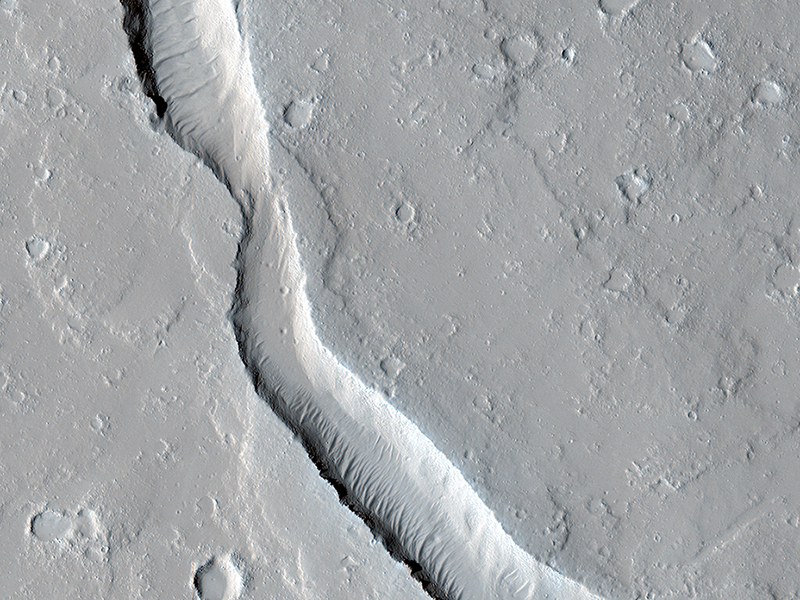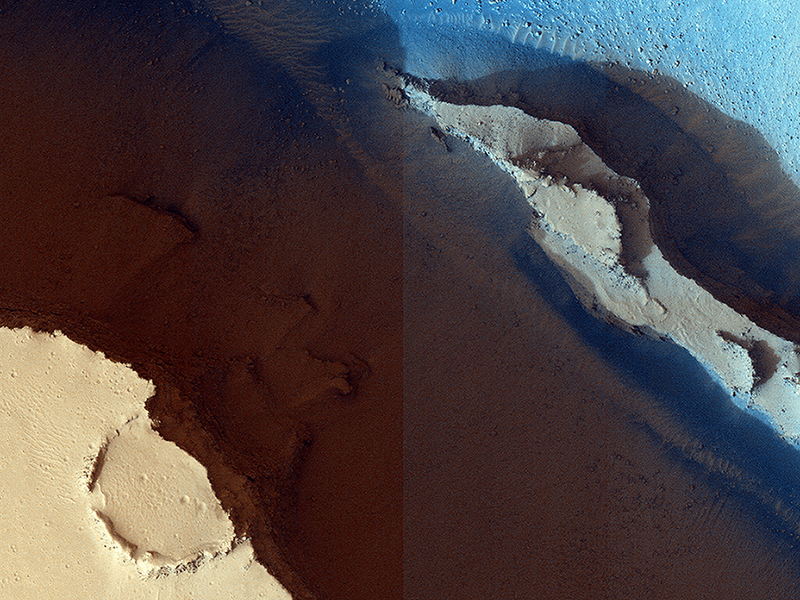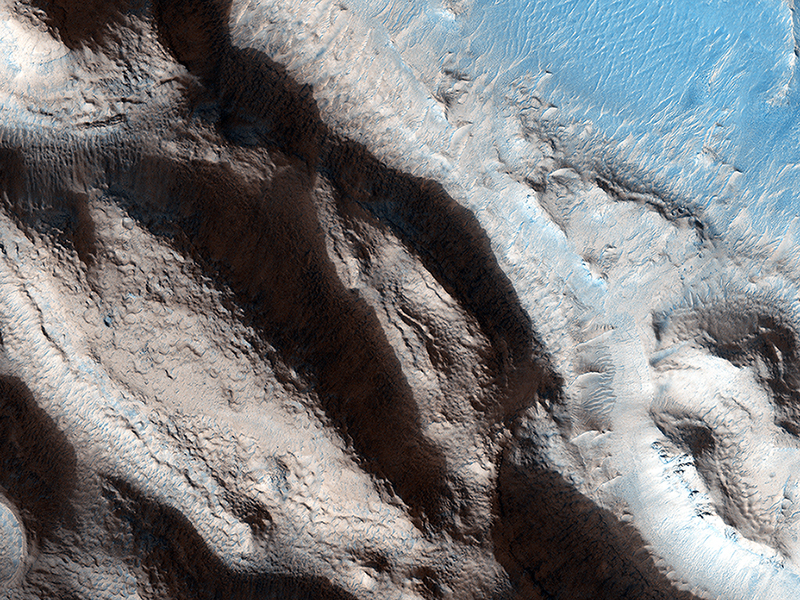Livio Tornaben and Kayle Hansen wrote:When Weather Happens: Liu Hsin Crater Ejecta (ESP_020158_1275)
This observation was intended to be an image of Liu Hsin ejecta, but instead, haze and/or clouds were observed. At this latitude (approximately 50 degrees south), it is not entirely unexpected to get some clouds with the lighting rapidly changing and water-ice frost sublimating into the atmosphere.
Because HiRISE is primarily designed for geologic investigations of the Martian surface, HiRISE planners use images for its sister instrument MARCI to try and avoid bad weather on Mars. But just as on Earth, the weather is sometimes unpredictable.
Livio Tornabene and Kayle Hansen wrote:Lava Flow Near the Base of Olympus Mons (ESP_020090_1985) (HiClip)
This image shows a lava channel, which lies just to the east of the largest volcano in the solar system: Olympus Mons.
The channel appears to be discontinuous, meaning it disappears several times throughout its length, but in fact, it is likely that the channel continues underground as a lava tube.
These are relatively common features at terrestrial volcanic centers, such as the Big Island of Hawai'i. The channel appears to have been infilled with dust and sand, so that the entrance to a lava tube cave is no longer visible at this particular location; fortunately this has been observed elsewhere on Mars.
Kirby Runyon wrote:Cerberus Fossae: In the Relay Zone (ESP_039121_1905) (HiClip)
These trenches or “fossae” are about a kilometer (0.62 miles) across. This area shows where two segments have joined up and are close to a third section.
The fossae are probably areas where the surface has collapsed down into voids made from faults (huge cracks with movement on either side) that don’t extend up to the surface. In structural geology, when multiple faults are closely spaced, we call that a relay zone. These zones have much higher stress built up in the crust and consequently tend to be more fractured. These fractures can serve as “pipes” for fluids (water, lava, gases) to flow through.
This area corresponds with the youngest of Mars’ giant outflow channels, Athabasca Valles, that is only 2 to 20 million years old and shows geologic evidence of having been formed and modified jointly by water and lava.
Sharon Wilson wrote:A Fresh, Shallow Valley in Northern Arabia Terra (ESP_039997_2170) (HiClip)
This relatively fresh, shallowly incised valley was once filled with water and/or ice and flowed to the west toward a large, local depression in northern Arabia Terra (36.5 degrees north, 0.3 degrees east).
This type of valley is younger and distinct in appearance relative to the ancient valley networks that formed in the Martian highlands. Most fresh, shallow valleys like this one often appear as scattered and isolated or sparsely branched networks of individual valleys in the mid-latitudes and equatorial regions of Mars. The floor of the channel within this broader valley is covered with light-toned transverse aeolian ridges (3 kilometers across).
Credit: NASA/JPL/University of Arizona
<< Previous HiRISE Update



